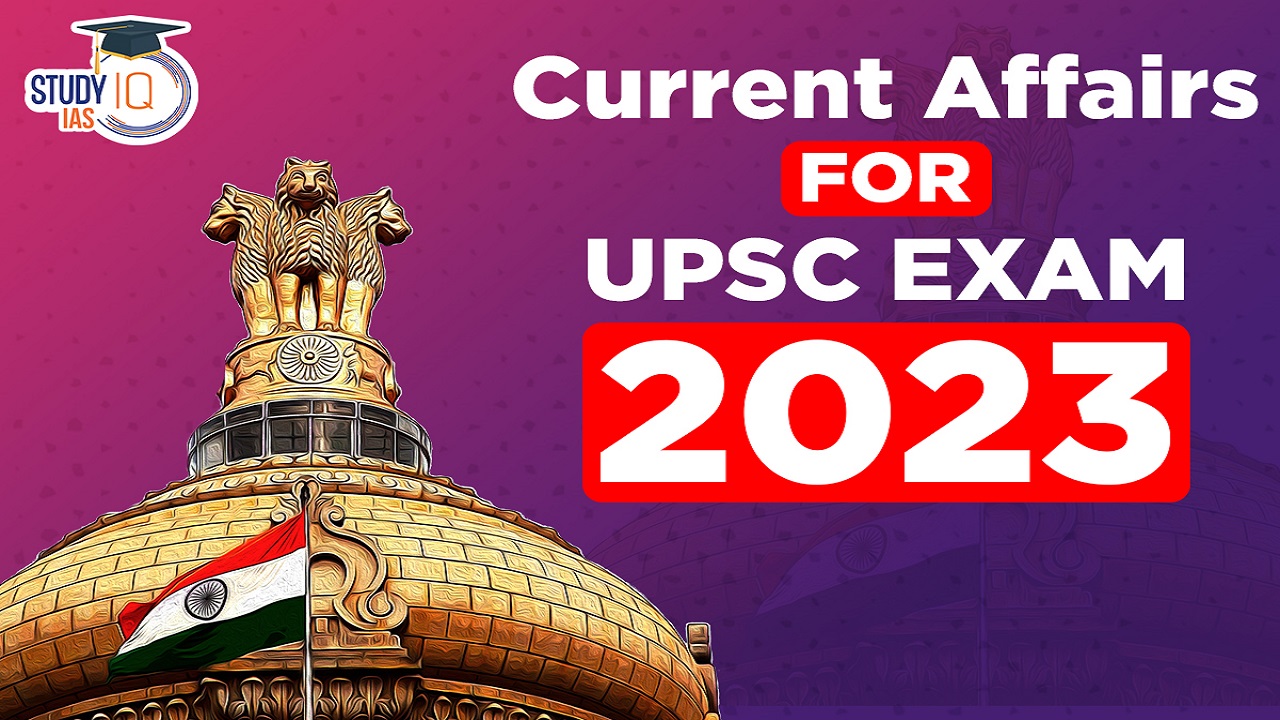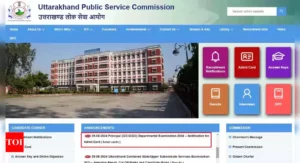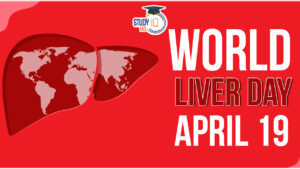Current Affairs 12th July 2023 for UPSC Prelims Exam
Central Bank Digital Currency (CBDC)
Context: RBI Deputy Governor T. Rabi Sankar has said the RBI is aiming to increase the number of Central Bank Digital Currency transactions to 10 lakh per day by the end of 2023.
What is Central Bank Digital Currency (CBDC)?
- Definition: CBDC is the legal tender issued by a central bank in a digital form. It is the same as a fiat currency and is exchangeable one-to-one with the fiat currency. Only its form is different.
- A government-issued currency is known as fiat money.
- Difference with Cryptocurrencies: The concept of CBDCs was directly inspired by Bitcoin but it is different from decentralised virtual currencies and crypto assets, which are not issued by the state and lack the ‘legal tender’ status.
| CBDC | Cryptocurrency |
|
|
|
|
|
|
|
|
- Need: The emergence and development of cryptocurrencies and Blockchain technology has increased interest in cashless societies and digital currency.
- As a result, governments and central banks throughout the world are considering the use of government-backed digital currencies.
- Advantages:
- Central bank digital currencies are promised as reliable, sovereign-backed alternatives to private currencies which are volatile and unregulated.
- CBDCs also minimise the maintenance required for a complicated financial system and cut cross-border transaction costs.
- The cost of issuing digital currencies is far lower than the cost of printing and distributing physical cash.
- Digital currencies also minimise the dangers associated with utilising digital currencies in their current form.
- The introduction of digital cash may bring down the use of physical cash.
- CBDC’s if designed keeping in mind the environment, social and governance (ESG) objectives, can be more environment friendly compared to alternative cashless methods.
- The CBDC helps curb emissions by nullifying operations such as printing, storage, transportation, and replacement of physical currency.
- Challenges:
- People may begin withdrawing money from their bank accounts as digital currencies issued by Central banks become more popular.
- Many people currently use bank accounts to safely store their cash. When the digital wallet offered by a central bank can serve the same purpose, people could very well begin converting their bank deposits into digital cash.
- Large flight of capital from bank accounts might not get converted into digital currencies as bank accounts, unlike digital currencies, offer interest on deposits.
- Banks will be able to create fewer loans as when customers convert their bank money into CBDCs, banks will be forced to surrender at least some cash and will thus possess an even smaller base on which to create loans.
- People may begin withdrawing money from their bank accounts as digital currencies issued by Central banks become more popular.
RBI’s e-rupee: The pilot phase of CBDC or digital rupee for both wholesale and retail uses was launched by the RBI in 2022.
-
- The digital Rupee-Retail (e₹-R) is an electronic version of cash and is primarily meant for retail transactions to be used by the private sector, non-financial consumers and businesses.
- The e₹-R is in the form of a digital token that represents legal tender.
- The retail segment has components based on blockchain technology.
- It is being issued in the same denominations as the paper currency and coins.
- It is being distributed through financial intermediaries, i.e., the banks.
- Users will be able to transact with e₹- R through a digital wallet offered by the participating banks.
- Transactions can be both Person to Person (P2P) and Person to Merchant (P2M).
- The e₹-R offers features of physical cash like trust, safety and settlement. finality.
- Like cash, the CBDC will not earn any interest and can be converted to other forms of money, like deposits with banks.
- The digital Rupee-Retail (e₹-R) is an electronic version of cash and is primarily meant for retail transactions to be used by the private sector, non-financial consumers and businesses.
Current Affairs 11th July 2023 for UPSC Prelims Exam
North Atlantic Treaty Organization (NATO)
Context: NATO Secretary General Jens Stoltenberg said Ukraine would become a member of the alliance once allies agree and conditions are met.
About the North Atlantic Treaty Organization (NATO)
- Establishment: NATO was formed in 1949 with the aim of acting as a deterrent to the threat of Soviet expansion in Europe after World War II.
- The Washington Treaty – or North Atlantic Treaty – forms the basis of the NATO.
- Purpose: The organization acts as a collective security alliance with the aim of providing mutual defence through military and political means if a member state is threatened by an external country. (Article 5 of the North Atlantic Treaty).
- Founders: Its 12 founding members are the United States, the United Kingdom, Belgium, Canada, Denmark, France, Iceland, Italy, Luxembourg, the Netherlands, Norway and Portugal.
- Story of NATO Expansion:
- The Soviet Union responded to NATO by creating its own military alliance with seven other Eastern European communist states in 1955, dubbed the Warsaw Pact.
- But after the collapse of the Soviet Union in 1991, a number of former Warsaw Pact countries became NATO members. This includes Hungary, Poland, Bulgaria, Estonia, Latvia among others.
- The most recent additions were North Macedonia in 2020 and Finland in 2023, bringing the total number of NATO member states to 31.
- NATO’s Open-door policy (Article 10 of the treaty): It enables any European country that can enhance and contribute to the security of the North Atlantic area to join the alliance.
- Major Non-NATO Ally Status: It is a designation given by the US government to close allies that have strategic working relationships with the US Armed Forces but are not members of the NATO.
- The US has designated 30 other countries including Japan, South Korea, Japan, Israel etc. as major non-NATO allies.
- The status confers a variety of military and financial advantages such as participation in defence research projects and counter-terrorism initiatives, buy depleted uranium ammunition etc. that otherwise are not obtainable by non-NATO countries.
About NATO Membership
- Minimum requirements for acquiring NATO membership: Article 10 of the North Atlantic Treaty prescribes the following as requirements for joining NATO as a member:
- New members must uphold democracy, including tolerating diversity.
- New members must be making progress toward a market economy.
- Their military forces must be under firm civilian control.
- They must be good neighbours and respect sovereignty outside their borders.
- They must be working toward compatibility with NATO forces.
- Procedure for acquiring membership: NATO membership normally involves a long process, and it requires unanimous approval, which equals the approval of all 31 existing allied countries.
- Benefits of acquiring NATO membership for a country:
- Security: NATO provides a collective defence system that can deter potential threats and protect member countries from aggression.
- Enhanced military capabilities: NATO membership offers access to advanced military technology, training, and joint exercises with other member countries, which enhances a country’s military capabilities and readiness.
- Political influence: Being a NATO member can provide a country with a stronger voice on the international stage and a greater say in global security and defence matters.
GST Council
Context: The Goods and Services Tax (GST) Council at its 50th meeting has decided to impose a 28% tax on the turnover of online gaming companies, horse racing and casinos.
About Goods and Services Tax (GST) Council
- Definition: The GST Council is a constitutional body responsible for making recommendations on issues related to the implementation of the Goods and Services Tax (GST) in India.
- Composition: Article 279A of the Indian Constitution gives power to the President of India to constitute a joint forum of the Centre and States called the GST Council, consisting of:
- Union Finance Minister – Chairperson
- The Union Minister of State, in-charge of Revenue of finance – Member
- The Minister in-charge of finance or taxation or any other Minister nominated by each State Government – Members
- Decisions: During its meetings, the GST Council takes decisions through a consensus-based approach promoting the spirit of the co-operative federalism:
- Decisions in the GST Council are taken by a majority of not less than three-fourth of weighted votes cast.
- Centre has one-third weightage of the total votes cast and all the states taken together have two-third of weightage of the total votes cast.
- Functions: As per Article 279A (4), the Council will make recommendations to the Union and the States on important issues related to GST, like:
- Goods and services that may be subjected or exempted from GST,
- Model GST Laws,
- Principles that govern Place of Supply,
- Threshold limits,
- GST rates including the floor rates with bands,
- Special rates for raising additional resources during natural calamities/disasters, special provisions for certain States, etc.
- Decisions taken at 50th Meeting:
- A 28% GST rate has been levied on full value of gaming , horse racing, and casinos which comes as a drawback to online gaming companies. The tax would be levied on full value of bets or full value of consideration paid.
- Food and beverages consumed in cinema halls will attract a GST of 5%, equivalent to the levy charged in hotels and restaurants, instead of 18% which was being charged by many cinema halls for composite food packages.
- The definition of utility vehicles has been tweaked to allow the levy of 22% cess over and above the 28% GST rate.
- The cess will be imposed on any utility vehicles of 1500 cc and above engine capacity, length of 4 metre and above and unladen ground clearance of 170 mm. This definition will, however, not cover sedans.
- The GST Council also exempted GST on import of cancer drug Dinutuximab, medicines used to treat rare diseases, and food used in Food for Special Medical Purposes (FSMP).
- GST exemption on satellite launch services supplied by ISRO.
- The Council has recommended the Rules governing appointment and conditions of President and Members of the proposed GST Appellate Tribunal for enabling smooth constitution and functioning of GST Appellate Tribunal.
- Demands for state-wise benches were presented by various states, and the Council approved setting up of as many as 40 benches in phases.
- The Council also approved reduction in GST rates for four items:
- Uncooked, unfried & extruded snack palettes brought down from 18 to 5 %.
- Fish soluble paste brought down from 18 to 5%.
- LD slag to be at par with blast furnace slag. It has been changed from 18 to 5%.
- Imitation zari thread brought down from 12% to 5%.
Protection of Plant Varieties and Farmers Rights Act, 2001 (PPV&FR)
Context: The Delhi High Court has held that there was “no merit” in the appeal filed by PepsiCo over the patent rights for its ‘unique potato’ variety.
Legal Tussle Between Farmers and Pepsico:
- The PPVFRA revoked PepsiCo’s registration with respect to its potato plant variety, ‘FL 2027’ (used in Lay’s chips).
- FL 2027 is a ‘chipping potato’ variety with low external defects, high dry matter/high solids content and stable sugars, all of which make it highly suitable for the manufacture of chips.
- According to the appellant, it was developed in the U.S. a plant breeder and a former employee of Frito-Lay Agricultural Research, a division of PepsiCo Inc.
- A certificate of registration for FL 2027 was granted to PepsiCo India on February 1, 2016, conferring it an exclusionary right to market, sell, import, export or distribute FL 2027 for a period of six years.
- However, in an application filed farmers’ rights activist, the PPVFRA revoked the company’s registered potato variety on December 3, 2021.
- The court rejected the appeal of PepsiCo on grounds of Section 34(a) (incorrect information furnished).
- The Court found that that PepsiCo had sought the registration of FL 2027 variety as a “new variant” instead of an “extant variant”.
- However, to be registered as a “new variant” an additional requirement of ‘novelty’ in addition to ‘distinctiveness’, ‘uniformity’ and ‘stability’ must be satisfied one year before the date of filing of the application for registration.
-
- The court held that FL 2027 could not fulfil the criteria of novelty and was only eligible for registration under “extant variety”.
What is Protection of Plant Varieties and Farmers Rights Act, 2001?
- Definition: The Act provides an effective framework to conserve and encourage the development of various plant varieties.
- Aim: To establish an effective system for the protection of plant varieties, the rights of farmers and plant breeders and to encourage the development of new varieties of plants.
- To recognize and protect the rights of farmers in respect of their contributions made at any time in conserving, improving and making available plant genetic resources for the development of new plant varieties.
- To accelerate agricultural development in the country,
- To protect plant breeders’ rights;
- To stimulate investment for research and development both in the public & private sector for the development of new plant varieties.
- Facilitate the growth of the seed industry in the country which will ensure the availability of high quality seeds and planting material to the farmers.
- Grounds for Revocation: According to Section 34 of the PPV&FR Act, the protection granted to a breeder may be revoked by the authority on the following grounds:
- Grant of a registration certificate is based on incorrect information furnished by the applicant;
- Registration certificate was granted to an ineligible person;
- When the breeder does not provide the registrar with the required documents;
- A failure to provide an alternative denomination for variety registration in case the earlier variety provided is not permissible for registration;
- A failure of the breeder to provide the required seeds for compulsory licence;
- Failure to comply with the acts, rules, regulations and directions issued by the Authority;
- If the grant of the registration certificate is against public interest.
- Rights Under the Act:
- Farmers’ Rights:
- A farmer who has evolved or developed a new variety is entitled for registration and protection in like manner as a breeder of a variety;
- Farmers variety can also be registered as an extant variety;
- A farmer can save, use, sow, re-sow, exchange, share or sell his farm produce including seed of a variety protected under the PPV&FR Act, 2001;
- Farmers are eligible for recognition and rewards for the conservation of Plant Genetic Resources of land races and wild relatives of economic plants;
- There is also a provision for compensation to the farmers for non-performance of variety under Section 39 (2) of the Act, 2001;
- Farmer shall not be liable to pay any fee in any proceeding before the Authority or Registrar or the Tribunal or the High Court under the Act.
- Breeders’ Rights
- Breeders will have exclusive rights to produce, sell, market, distribute, import or export the protected variety. Breeders can appoint agents/ licensee and may exercise for civil remedy in case of infringement of rights.
- Researchers’ Rights
- Researcher can use any of the registered varieties under the Act for conducting experiment or research. This includes the use of a variety as an initial source of variety for the purpose of developing another variety but repeated use needs prior permission of the registered breeder.
- Rights of Community
- It is compensation to village or local communities for their significant contribution in the evolution of variety which has been registered under the Act.
- Any person/group of persons/governmental or non-governmental organization, on behalf of any village/local community in India, can file in any notified centre, claim for contribution in the evolution of any variety.
- Farmers’ Rights:
Global Multi-Dimensional Poverty Index 2023
Context: The United Nations Development Programme (UNDP) has released the Global Multi-Dimensional Poverty Index 2023.
About the Global Multi-Dimensional Poverty Index (MPI)
- The global MPI is a key international resource that measures acute multidimensional poverty across more than 100 developing countries.
- It was first launched in 2010 by the Oxford Poverty and Human Development Initiative (OPHI)and the Human Development Report Office of the UNDP.
- It goes beyond traditional income-based measures of poverty by considering multiple dimensions of deprivation, including health, education, and living standards.
- The Global MPI is released at the High-Level Political Forum (HLPF) on Sustainable Development of the United Nations in July, every year.
- Methodology of the Index:
- The Global MPI uses three standard dimensions: Health; Education; Standard of Living and ten indicators.
- Global MPI is computed by scoring each surveyed household on 10 parameters based on –nutrition, child mortality, years of schooling, school attendance, cooking fuel, sanitation, drinking water, electricity, housing and household assets.
Key Findings of the Global Multi-Dimensional Poverty Index (MPI) 2023
| Global |
|
| India |
|


 UKPSC Lower PCS Recruitment 2024: Exam D...
UKPSC Lower PCS Recruitment 2024: Exam D...
 India’s First Full-Stack Quantum Compu...
India’s First Full-Stack Quantum Compu...
 World Liver Day 2025, Theme, History, Ce...
World Liver Day 2025, Theme, History, Ce...





















